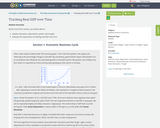
By the end of this section, you will be able to:Explain recessions, depressions, peaks, and troughsEvaluate the importance of tracking real GDP over time
- Subject:
- Applied Science
- Economics
- Material Type:
- Module
- Date Added:
- 09/20/2018

By the end of this section, you will be able to:Explain recessions, depressions, peaks, and troughsEvaluate the importance of tracking real GDP over time

With this free video resource, students will explore the economic way of thinking, and the role incentives play in all our lives through engaging Hollywood production style videos.
Educators can use MRU's videos in a variety of ways, to include “flipping” the classroom, as study aids, supplementary material, concept reinforcement, or even as a full course offering.
In MRU's Principles of Macroeconomics course, we’ll cover fundamental questions such as: Why do some countries grow rich while others remain poor? How important is a country’s banking system — and what happened during the recent financial crisis? How did Zimbabwe end up with an inflation rate that rose into the quadrillions?
We’ll also cover important topics like the Federal Reserve, monetary policy, fiscal policy, the Solow Growth Model, institutional analysis, the “economics of ideas,” and more.
------------------------------------
What is Marginal Revolution University (MRU)?
Many of us can remember our first great economics teacher who fundamentally changed how we see the world. At MRU, we try and deliver that experience to millions worldwide through video.
Founded as a nonprofit in 2012 by George Mason University economics professors Tyler Cowen and Alex Tabarrok, MRU is building the world’s largest online library of free economics education videos -- currently weighing in at more than 800 videos.
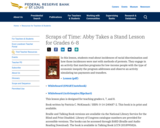
In this lesson, students read about incidences of racial discrimination and how those incidences were met with methods of protests. They engage in an activity that matches programs for low-income people with the type of economic inequity the program addresses and observe an activity simulating tax payments and transfers.
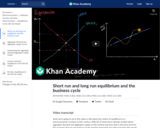
The interaction of SRAS and AD determine national income. We can compare that national income to the full employment national income to determine the current phase of the business cycle. An economy is said to be in long-run equilibrium if the short-run equilibrium output is equal to the full employment output.
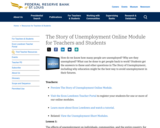
How do we know how many people are unemployed? Why are they unemployed? What can be done to get people back to work? Students get the answers to these and other questions in The Story of Unemployment, including why education might be the best way to avoid unemployment in their futures.
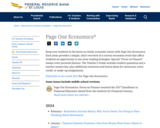
U.S. taxpayers expect the government to be a careful steward of taxpayer money. The October 2017 issue of Page One Economics: Focus on Finance explains how the Treasury Offset Program recovers taxpayer money from people who have received government benefits in error or by fraud and also recovers delinquent child support.
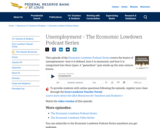
The fifth episode covers the basics of unemployment—how it is defined, how it is measured, and how it is categorized into three types. A "gameshow" quiz winds up the nine-minute lesson.
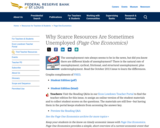
The unemployment rate always seems to be in the news, but did you know there are different kinds of unemployment? There is the natural rate of unemployment; cyclical, frictional, and structural unemployment; plus underemployment. Read the October 2013 issue to learn the differences.
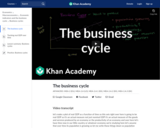
Economists have long been interested in the causes of the business cycle. In this video we define the business cycle, discuss potential reasons it exists, and explore how it may be driven by emotion. Created by Sal Khan.